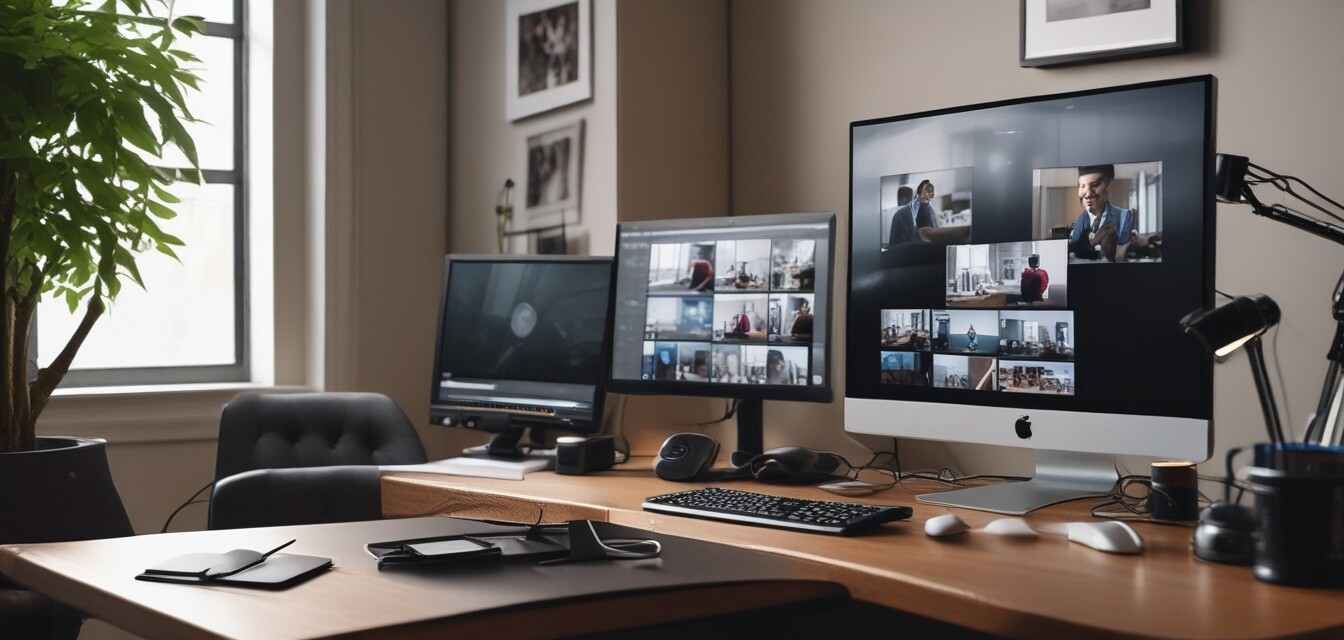
Tips for organizing video conferencing equipment cables
Key Takeaways
- Proper cable management boosts professionalism during video calls.
- Use cable clips and organizers to keep cables tangle-free.
- Establish a routine for regular maintenance of the cable setup.
- Select organizers that match your workspace aesthetics.
- Leverage technology to monitor and manage cables effectively.
As remote work continues to thrive, video conferencing has become an essential part of professional communication. A clean and organized setup not only enhances your image but also fosters efficiency and productivity. In this article, we will delve into practical suggestions for organizing the cables associated with your video conferencing equipment. Let's transform that tangled mess into a streamlined setup!
Understanding the importance of cable management
An organized cable system contributes significantly to creating a professional appearance during meetings. Here are some compelling reasons why cable management is crucial:
- Reduced distractions: Tidy cables minimize the risk of distractions for both you and your attendees.
- Enhanced safety: Properly managed cables prevent tripping hazards and reduce wear and tear on the cables.
- Streamlined appearance: A clutter-free space presents a more appealing backdrop during video calls.
- Improved productivity: When everything is organized, you can focus more on the task at hand rather than managing a mess.
Types of video conferencing equipment cables
Your video conferencing setup may include various cables. Understanding the types of cables can help you decide on the best organization strategy:
| Cable Type | Common Use |
|---|---|
| HDMI Cables | Connecting video sources to displays |
| USB Cables | Connecting microphones, webcams, and other devices |
| Ethernet Cables | Internet connectivity for video calls |
| Power Cables | Supplying power to devices |
Tips for organizing video conferencing equipment cables
Here are some actionable tips to help you organize cables effectively:
1. Identify and label your cables
Begin by identifying all the cables involved in your setup. Use labels or colored tags to mark each cable. This practice will save time when connecting or disconnecting devices.
2. Use cable clips and holders
Utilize cable clips and holders to secure cables in place. These tools prevent tangles and allow you to route cables neatly along your desk or wall.
3. Implement a cable organizer box
An effective way to hide excess cable lengths is by using a cable organizer box. Simply tuck the unused cables inside to keep your workspace looking clean. Consider checking cable organizer boxes for the right fit.
4. Consider under-desk trays
If desk space is limited, using an under-desk cable tray is a great option. It allows you to manage cables discreetly while keeping them easily accessible. Learn more about options in our section on under-desk cable trays.
5. Utilize cable sleeves
Cable sleeves help bundle multiple cables together, giving a cleaner look. They also protect the cables from wear and tear. Check out cable sleeves and covers for a stylish and effective solution.
6. Schedule regular maintenance
Implement a routine to check on your cable management system. Regular maintenance includes re-routing, re-labeling, and ensuring your cable organizers are still effective.
Real-world examples of organized setups
The following are examples of organized video conferencing setups:
- Example 1: A simple desk with an under-desk tray and labeled cables for quick access.
- Example 2: A sleek setup using cable sleeves and clips for a minimalist aesthetic.
- Example 3: A multi-device arrangement with color-coded cables and a power strip housed within a cable organizer.
The impact of aesthetics on video conferencing
A well-organized cable system contributes to the overall aesthetics of your workspace. A neat and professional backdrop during video calls leaves a positive impression on colleagues and clients.
Conclusion
Effective cable management is key to a successful and professional video conferencing experience. By implementing the above tips, you can create a tidy and efficient workspace that enhances focus and impresses your attendees. Don't forget to explore our full range of recommendations for practical tips on maintaining a clutter-free home office.
Pros
- Improves professionalism during video calls.
- Reduces distractions from a messy setup.
- Enhances productivity by streamlining your workspace.
Cons
- Initial time required to set up the organization system.
- May require additional purchases of organizers or tools.